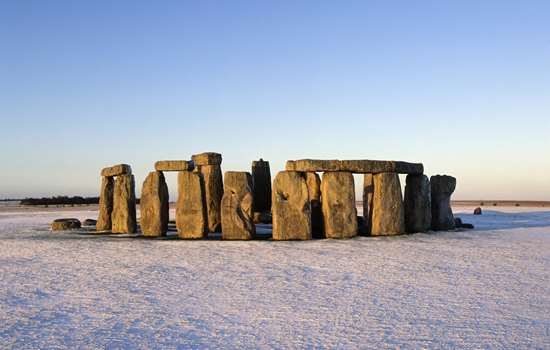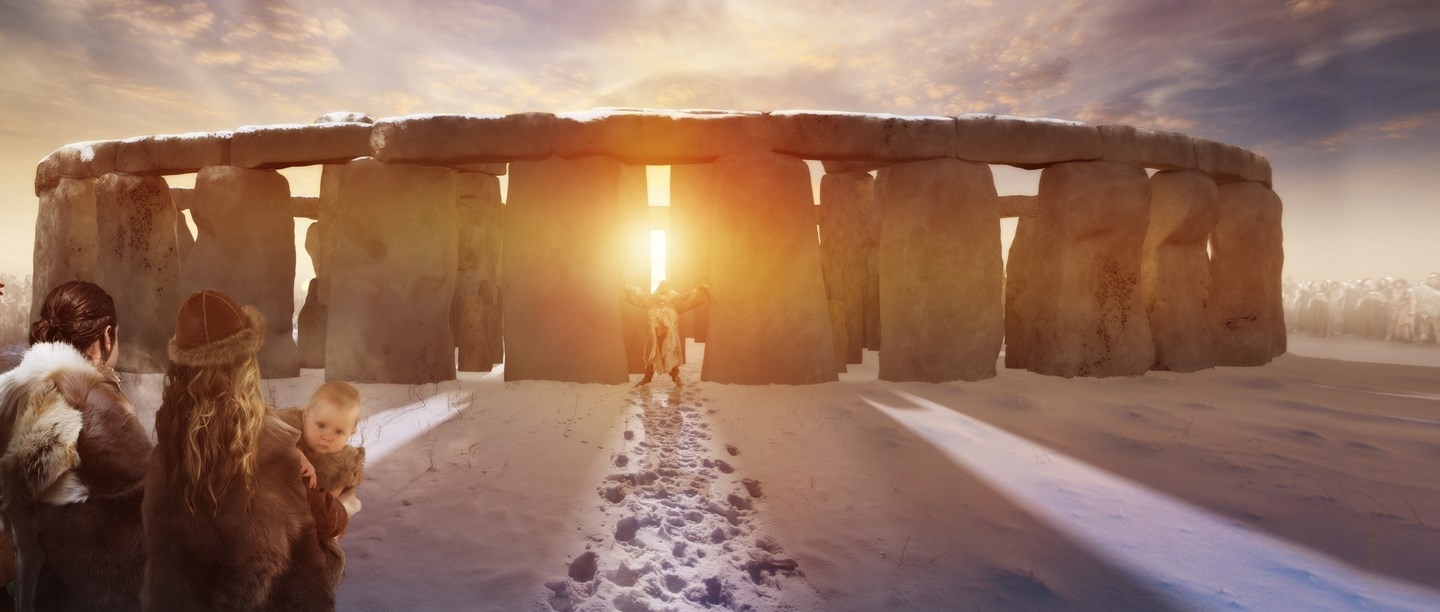The Winter Solstice
The earth rotates on a tilted axis. When this axis leans towards the sun, it’s summer in the northern hemisphere and winter in the south. This is reversed as the earth continues on its orbit until the axis becomes tilted away from the sun. During the winter solstice, the earth’s axis is tilted at its furthest point from the sun. This means that, for us in the northern hemisphere, the sun is at its lowest point in the sky. It’s also the shortest day of the year – and the longest night.
Solstice and Stonehenge
Marking the passage of time was important to many ancient cultures. For the people of Stonehenge, who were farmers that grew crops and tended herds of animals, knowing when the seasons were changing was important. Winter might have been a time of fear as the days grew shorter and colder. People must have longed for the return of light and warmth. Marking this yearly cycle may have been one of the reasons that Neolithic people constructed Stonehenge – a monument aligned to the movements of the sun.
The stones were shaped and set up to frame at least two important events in the annual solar cycle – the midwinter sunset at the winter solstice and the midsummer sunrise at the summer solstice.
At the summer solstice, around 21 June, the sun rises behind the Heel Stone and its first rays shine into the heart of Stonehenge. Although the tallest trilithon at the monument is no longer standing, the sun would have set between the narrow gap of these uprights during the winter solstice.
Midwinter Feasts
Winter solstice may have been more important than summer solstice for the people who built and used Stonehenge. Excavations at Durrington Walls, a Neolithic settlement situated about two miles away from the monument, suggest that people held huge feasts around this time of year. Recent excavations revealed huge amounts of discarded pig and cattle bones at the site.
Archaeologists estimate that these animals were probably killed when they were around nine months old. They would have been born in the spring, so it would seem that these pigs and cattle were slaughtered around the time of the winter solstice. Putting this together with what we know about the alignment of the stones, it’s possible that people gathered at Stonehenge at this time of year to take part in feasts, ceremonies and celebrations.
Feasting at StonehengeMore to Explore
-

Christmas
-

Visit Stonehenge
-
Making Prehistoric Cheese
